Its shiny gold head makes it very impressive to look at and really catches the eye. However, his voice leaves a lot to be desired!
Meet the yellow-headed blackbird
 Photo courtesy of USFWS Mountain Prairie / Public Domain
Photo courtesy of USFWS Mountain Prairie / Public Domain
The yellow-headed blackbird (Xanthocephalus xanthocephalus) , is a medium-sized blackbird and the only member of the genus Xanthocephalus. The adult male of this species has a body covered in mainly black plumage with a yellow head and a white spot on the wings.
 Photo courtesy of Becky Matsubara / CC BY 2.0
Photo courtesy of Becky Matsubara / CC BY 2.0
This combination makes it a very attractive bird, although its voice tends to sound like a rusty farm gate.
The adult female is primarily brown with a dull yellow throat and breast, while juveniles also tend to resemble her.
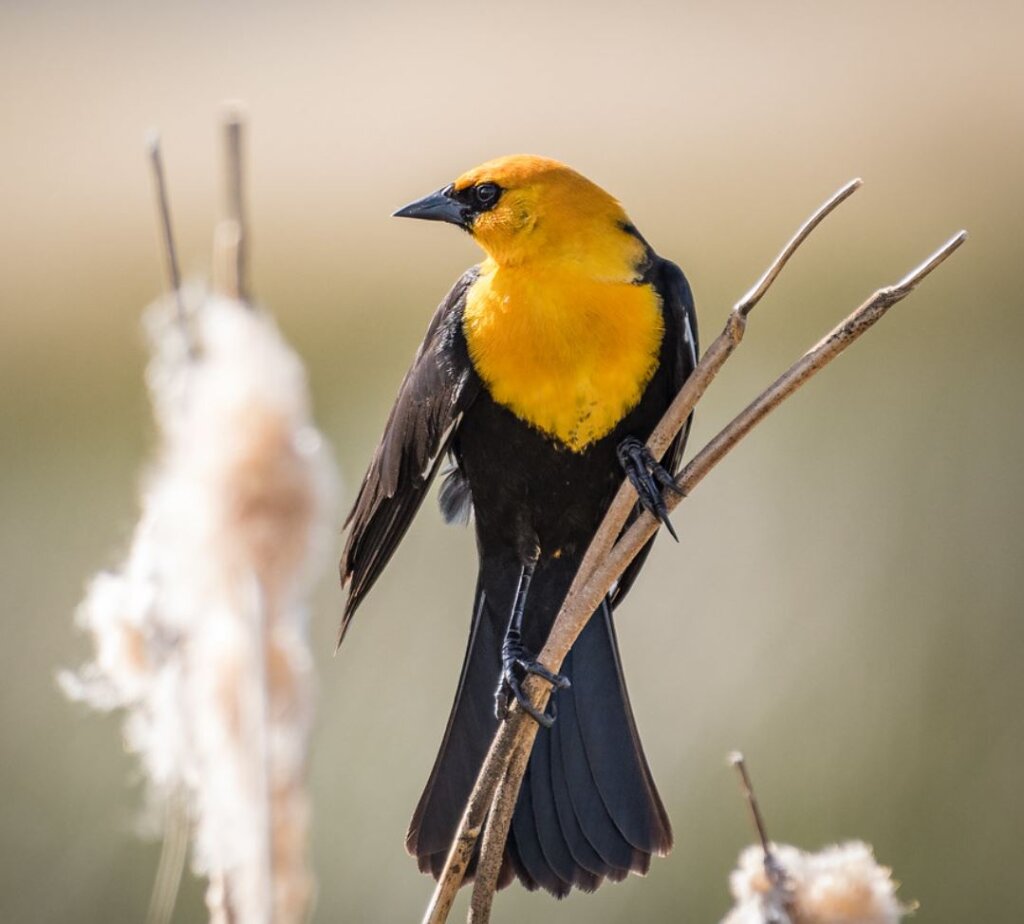 Photo (cropped) Courtesy of Becky Matsubara / CC BY 2.0
Photo (cropped) Courtesy of Becky Matsubara / CC BY 2.0
These birds are resident breeders in parts of Arizona and California. While other North American birds migrate in winter to the southwest of the United States and Mexico.
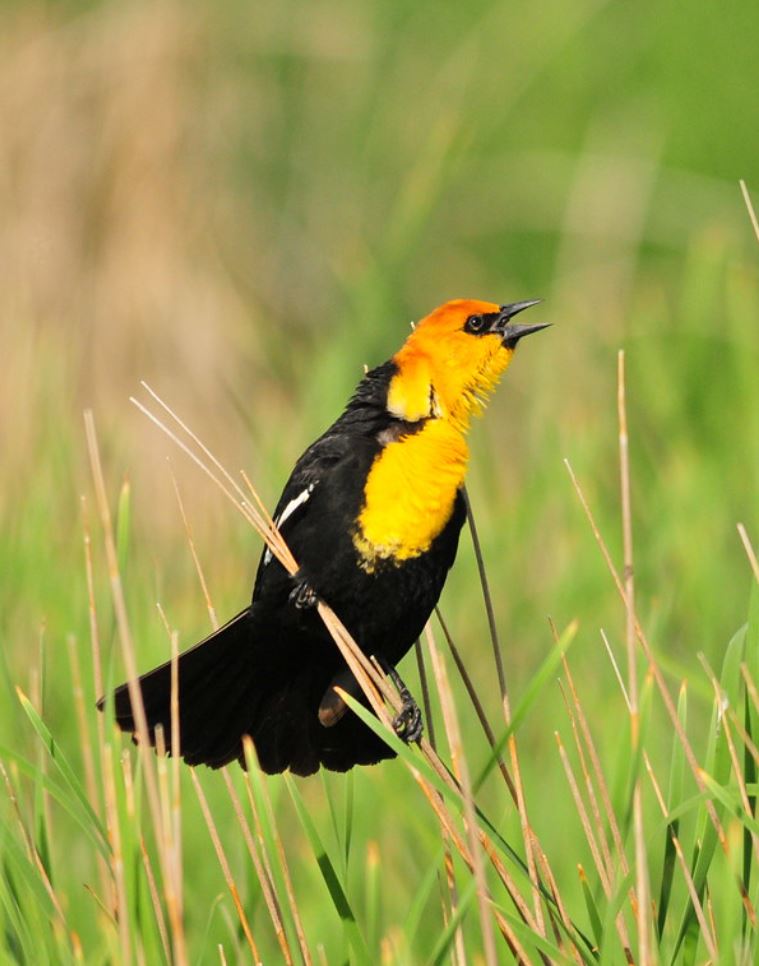 Photo courtesy of USFWS Mountain Prairie / CC BY 2.0
Photo courtesy of USFWS Mountain Prairie / CC BY 2.0
Its breeding habitat is in the cattail marshes of North America, primarily west of the Great Lakes region.
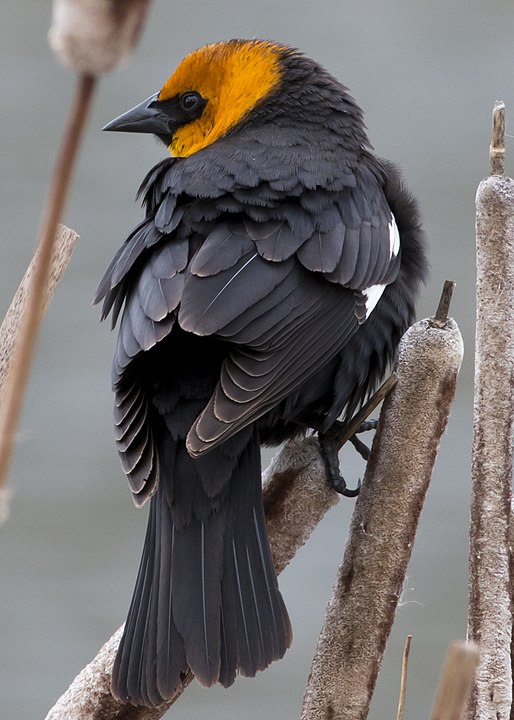 Photo courtesy of Blalonde / CC BY-SA 4.0
Photo courtesy of Blalonde / CC BY-SA 4.0
Yellow-headed blackbirds forage in swampy areas or on the ground looking for seeds and insects to eat. Quite often they can be seen foraging in flocks or with other blackbirds. Sometimes they also catch insects when flying.
 Photo (cropped) Courtesy of Becky Matsubara / CC BY 2.0
Photo (cropped) Courtesy of Becky Matsubara / CC BY 2.0
During the breeding season, the male yellow-headed blackbird establishes and then defends a small territory of prime nesting reeds. It can attract up to eight females in this territory which then build nests. She will also help feed the chicks in the first established nest, while the other females will have to feed the young alone.
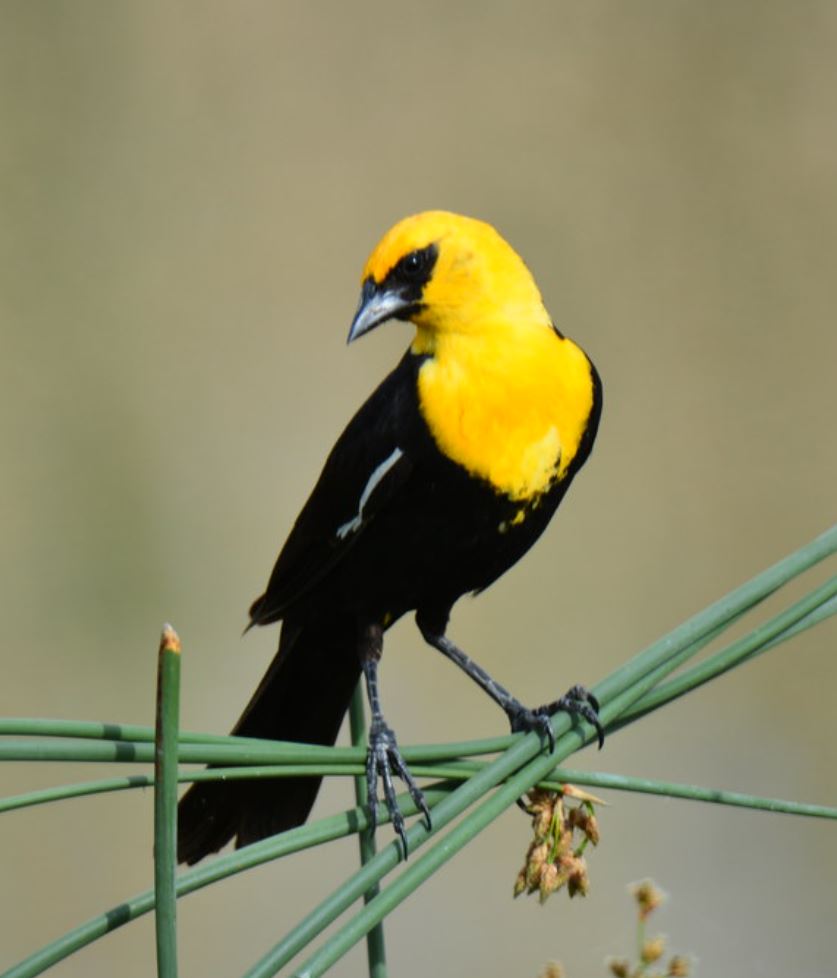 Photo courtesy of USFWS Mountain Prairie / CC BY 2.0
Photo courtesy of USFWS Mountain Prairie / CC BY 2.0
Due to the large breeding range of this species, it is described as common throughout its breeding range, for this reason it is listed as Least Concern on the IUCN list.
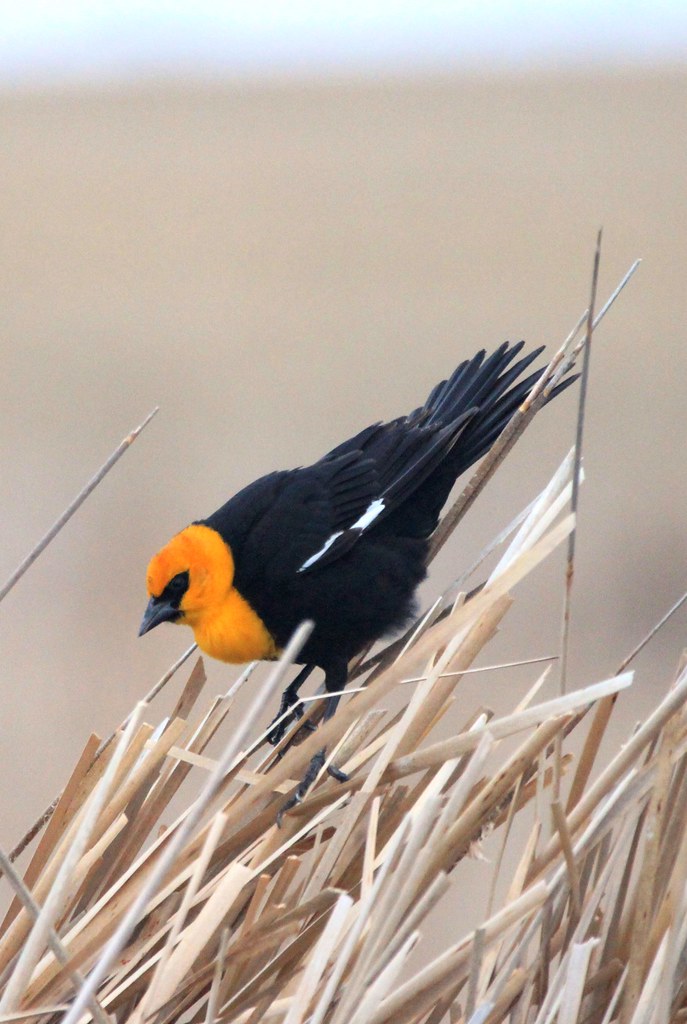 Photo courtesy of USFWS Mountain Prairie / CC BY 2.0
Photo courtesy of USFWS Mountain Prairie / CC BY 2.0
Watch and listen to this bird below:





